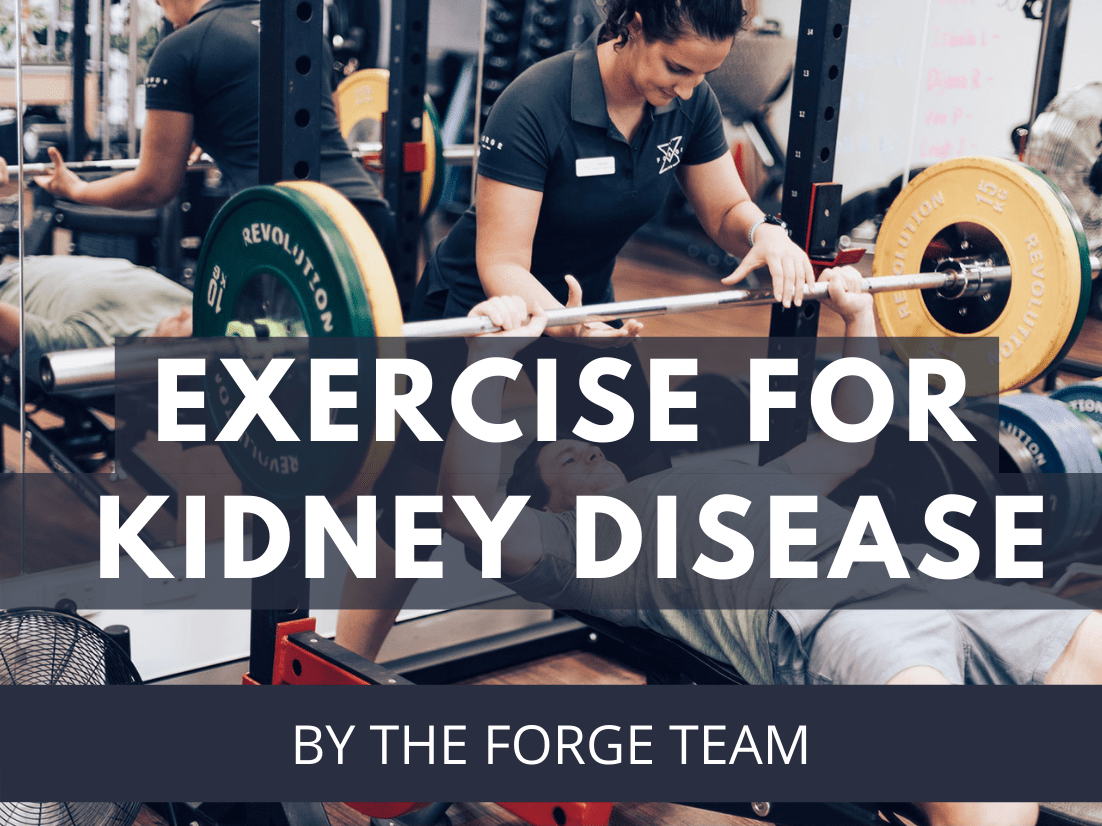EXERCISE THERAPY FOR CHRONIC KIDNEY DISEASE
Chronic kidney disease (CKD) is a condition in which individuals have structural renal damage and progressively diminished renal function. Research reveals that more than 1.7 million Australians have kidney disease, however only 10% of these individuals are actually aware they have it, making early intervention extremely difficult. Prevalence increases with specific comorbidities, with 1 in 5 people with kidney disease having type 2 diabetes or being over the age of 80, and 1 in 6 being diagnosed with hypertension. Chronic kidney disease is categorised into 5 stages, with stage 1 being defined as normal kidney function, and stage 5 indicating kidney failure.
The cardinal signs of CKD include anaemia, blood in urine, decreased mental alertness, decreased urine output, oedema, fatigue, and hypertension. However, as there are 5 different stages and progressions of the condition, every individual is likely to present with a multitude of other symptoms including changes to physical appearance, cognition and movement abilities.
Benefits of Exercise

Following a diagnosis of CKD, patients are often inactive, and have reduced physical functioning and performance (Johansen, 2005). An abundant amount of research has been conducted to assess the benefits of physical activity for the management of CKD. Evidence suggests that when patients with CKD partake in regular physical activity, improvements are seen in their exercise capacity, insulin sensitivity, and sleep quality, whilst also effectively controlling BP and cholesterol levels. Patients are also likely to experience a decrease in physical activity limitations and fewer instances of pain (Neil A. Smart et al., 2012). Essentially, the release of dopamine from dopaminergic cells stimulated through exercise reduces CKD symptoms and preserves GFR (Bellomo, Chapman, Finfer, Hickling, & Myburgh, 2000).
Exercise treatment for PD
Due to the varying degrees of severity within this condition, exercise prescription needs to be individualised to every client, depending on their signs, symptoms and rate of progression. The most effective exercise programs for CKD are those that include a combination of strength, aerobic conditioning and flexibility components to promote an increase in strength, and seek improvements in ones ability to function in daily life.
Prescribing exercises that can be performed both during and between dialysis treatments is highly important to ensure clients are provided a treatment plan that suits their individual needs. Such exercises include cycle ergometry, shoulder press, seated row, leg press, and leg curl, as these exercises can be performed with resistance machines in a gym, or using a theraband or bike in a seated position (even in a bed during dialysis) (Jung & Park, 2011). Studies have shown that exercise is an integral component of CKD, as patients experience greater improvements in physical fitness, psychological function, manual dexterity, reaction time, and muscle strength as opposed to those individuals who do not partake in physical activity (Takhreem, 2008).
FORGE CKD Management

Here at Forge, we have the facilities to tailor individualised exercise programs to patients with CKD, incorporating strength and conditioning components into every session. We run one on one and group classes, providing clients the opportunity to choose their preferred session type. As Forge is an integrated community of exercise physiologists and physiotherapists, we have the ability to cater for all levels of symptoms and disease stages, providing both long-term exercise management and a hands on treatment approach.
References:
- Bellomo, R., Chapman, M., Finfer, S., Hickling, K., & Myburgh, J. (2000). Low-dose dopamine in patients with early renal dysfunction: a placebo-controlled randomised trial. Australian and New Zealand Intensive Care Society (ANZICS) Clinical Trials Group. Lancet, 356(9248), 2139-2143.
- Johansen, K. L. (2005). Exercise and chronic kidney disease: current recommendations. Sports Med, 35(6), 485-499.
- Jung, T. D., & Park, S. H. (2011). Intradialytic exercise programs for hemodialysis patients. Chonnam Med J, 47(2), 61-65.
- Neil A. Smart, Andrew D. Williams, Levinger, I., Steve Selig, Erin Howden, Jeff S. Coombes, & Robert G. Fassette. (2012). Exercise & Sports Science Australia (ESSA) position statement on exercise and chronic kidney disease, . Journal of Science and Medicine in Sport.
- Takhreem, M. (2008). The effectiveness of intradialytic exercise prescription on quality of life in patients with chronic kidney disease. Medscape J Med, 10(10), 226.
Comments are closed.

